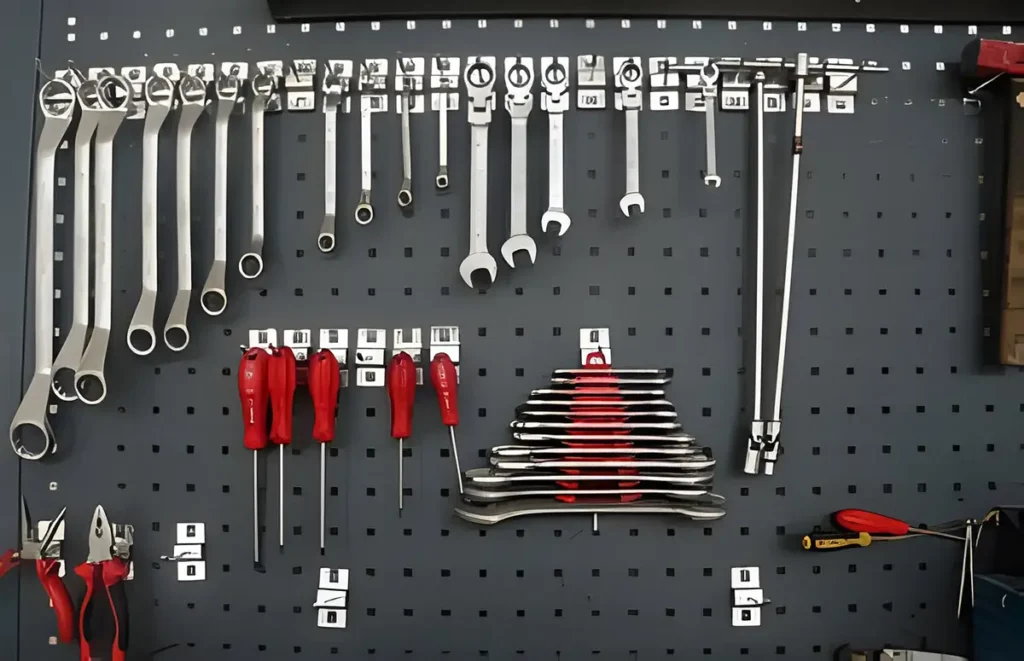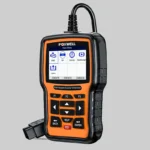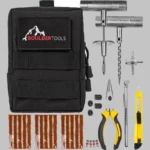Organizing your automotive tools not only enhances the efficiency of your workspace but also significantly reduces the time spent on any mechanical job. A well-arranged toolset prevents injuries and tool damages and ensures that everything you need is readily accessible.
This guide will walk you through the process of effectively organizing your automotive tools, which will help turn your garage into a more professional and satisfying workspace.
Assess Your Current Setup
The first step towards a well-organized tool space is to completely empty out your current storage areas. This might seem tedious, but it’s essential for taking stock of what you have and what you might need to replace or add. Clearing out space also allows you to clean and inspect your tools for any wear or damage, ensuring that everything you store is in good working condition.
Once your space is cleared, perform a thorough inventory of your tools and parts. Create a detailed list — this could be categorized by tool type, frequency of use, or any other system that suits your workflow. This inventory will serve as the foundation for deciding on the appropriate storage solutions and will help in identifying any duplicates or gaps in your collection.
Planning Your Space
Evaluate the Space: Measure the dimensions of your garage or workshop. It’s important to know exactly how much room you have to work with, which will influence the type and size of storage solutions you can accommodate. Consider all potential areas for storage, including walls, ceilings, and corners.
Design the Layout: Planning the layout involves more than just fitting storage units into your garage. Think about how you move within the space and place your tools accordingly. Group tools you use together near each other and consider the sequence of tasks in typical projects to minimize movement. Use diagrams or garage planning software to visualize and tweak your layout before implementing it.
Selecting Storage Solutions

1. Toolboxes and Chests
A sturdy toolbox or chest is indispensable for organizing smaller automotive tools. Select a toolbox that is proportionate to the number of hand tools you own — you might opt for a large rolling chest if you have an extensive collection or a smaller portable box for essentials. Look for features like lockable drawers to secure valuable tools, and ball-bearing drawers that won’t jam when loaded.
2. Wall Storage Systems
To maximize the use of space, install wall-mounted systems such as pegboards or slatwalls. These systems allow you to hang tools, keeping them visible and accessible. Customize your wall storage with a variety of hooks, bins, and shelves that can be rearranged as needed. This adaptability is particularly useful as your tool collection grows or changes.
Mobile Storage
For tools that you use frequently or that need to be moved around the workshop, consider investing in a rolling tool cart. These carts can be organized with commonly used tools and can be easily moved to wherever you are working, reducing the need to return to a stationary toolbox repeatedly.
Specialized Holders
For wrenches, screwdrivers, pliers, and other similar tools, use specialized holders such as magnetic strips, wrench organizers, and plier holders. These keep your tools sorted in a manner that you can easily see and grab the right one without digging through a drawer.
Organizing Tools by Type and Use
Efficient tool organization starts with categorization. Grouping tools by their function allows for smoother workflow and easier location. For instance, keep all electrical tools such as multimeters and insulation testers together, and store pneumatic tools like air wrenches and ratchets in another specific area. This method not only saves time but also reduces the risk of using the wrong tool for a task.
Arrange your tools based on how often you use them. Place frequently used tools like screwdrivers, pliers, and hammers within easy reach—perhaps on wall hooks or the top drawers of your toolbox. Less frequently used tools can be stored higher up on shelves or in lower drawers. This “first-point” principle ensures that your most essential tools are always at hand, minimizing effort and increasing productivity.
Implementing Organizational Accessories
Labels and Tags: To avoid wasting time searching for tools, implement a robust labeling system. Use labels on drawers and bins to indicate their contents clearly. This is especially helpful if you have multiple types of screws, washers, or nails. For a high-tech approach, consider barcode or RFID systems that can be scanned for a quick inventory check, which is particularly advantageous in a professional setting.
Foam Tool Organizers: Foam inlays can be cut to outline each tool’s shape within a drawer. This setup not only keeps your tools securely in place but also immediately highlights if a tool is missing. Additionally, it protects tools from damage and prevents them from shifting while drawers are opened and closed. Customizable foam inserts can be purchased, or you can cut your own to fit any drawer dimensions and tool shapes.
Maintenance Tips
Keeping your tools clean is not just about aesthetics; it prevents the build-up of grime and corrosion, thus extending the tools’ lifespan. Schedule regular cleaning sessions where all tools are wiped down and inspected for damage. Use appropriate cleaning solutions for different materials to avoid causing harm to delicate components.
Your organizational system should evolve as your tool collection grows. Periodically re-evaluate your storage needs and adjust your organization accordingly. It might be helpful to do a full reassessment annually, which can coincide with a deep cleaning of your workspace.
Additional Tips
- Workflow Consideration: Arrange your tools in a way that complements your natural workflow around the space. This setup reduces unnecessary movements and allows for a smoother transition between tasks.
- Plan for Future Adjustments: Always leave a little extra room for additional tools or changes to your collection. Modular storage solutions that can be easily reconfigured or expanded are ideal for adapting to future needs.
By following these steps and tips, you can ensure that your automotive tools are organized in a manner that enhances your efficiency and pleasure in your automotive projects. This systematic approach not only saves time but also prolongs the life of your tools, making it a wise investment in your workspace.
An organized garage or workshop increases productivity by reducing the time spent searching for tools and minimizes the chance of injury caused by improper storage. While setting up may take time, the day-to-day efficiencies gained will make this investment worthwhile. Keep your system flexible to accommodate new tools and changes in your workflow, and enjoy the benefits of a professional-grade automotive tool setup.

Matthew Dowell
Matthew, a seasoned builder from a family of craftsmen, leads Tools Trove. His passion for tools and decades of hands-on experience fuel his commitment to providing expert reviews and insightful content. Whether you’re a pro or a DIY enthusiast, Matthew’s guidance ensures informed decisions in the world of tools.




